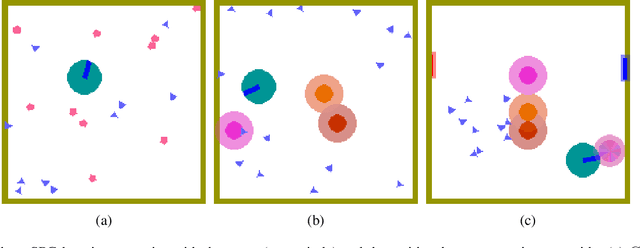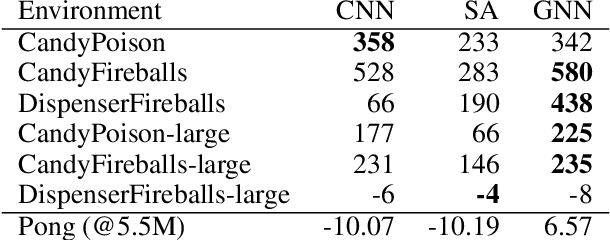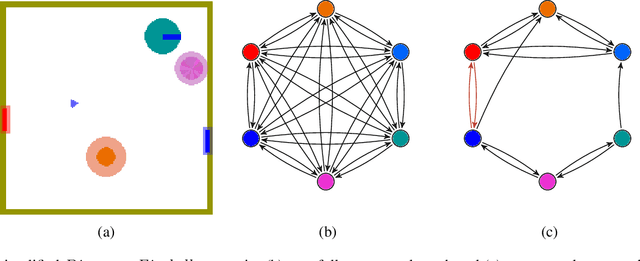Vince Jankovics
Efficient entity-based reinforcement learning
Jun 06, 2022



Abstract:Recent deep reinforcement learning (DRL) successes rely on end-to-end learning from fixed-size observational inputs (e.g. image, state-variables). However, many challenging and interesting problems in decision making involve observations or intermediary representations which are best described as a set of entities: either the image-based approach would miss small but important details in the observations (e.g. ojects on a radar, vehicles on satellite images, etc.), the number of sensed objects is not fixed (e.g. robotic manipulation), or the problem simply cannot be represented in a meaningful way as an image (e.g. power grid control, or logistics). This type of structured representations is not directly compatible with current DRL architectures, however, there has been an increase in machine learning techniques directly targeting structured information, potentially addressing this issue. We propose to combine recent advances in set representations with slot attention and graph neural networks to process structured data, broadening the range of applications of DRL algorithms. This approach allows to address entity-based problems in an efficient and scalable way. We show that it can improve training time and robustness significantly, and demonstrate their potential to handle structured as well as purely visual domains, on multiple environments from the Atari Learning Environment and Simple Playgrounds.
 Add to Chrome
Add to Chrome Add to Firefox
Add to Firefox Add to Edge
Add to Edge